 In February 2004, the Coalition Provisional Authority (CPA) in Iraq translated and released a letter from Abu Musab al-Zarqawi to the leadership of Al-Qaida. In the letter, Zarqawi lays out his strategy to ignite civil war, particularly by targeting the Shiites in Iraq.
In February 2004, the Coalition Provisional Authority (CPA) in Iraq translated and released a letter from Abu Musab al-Zarqawi to the leadership of Al-Qaida. In the letter, Zarqawi lays out his strategy to ignite civil war, particularly by targeting the Shiites in Iraq.
Below is the translation:
1. The foreign Mujahidin: Their numbers continue to be small, compared to the large nature of the expected battle. We know that there are enough good groups and jihad is continuing, despite the negative rumors. What is preventing us from making a general call to arms is the fact that the country of Iraq has no mountains in which to seek refuge, or forest in which to hide. Our presence is apparent and our movement is out in the open. Eyes are everywhere. The enemy is before us and the sea is behind us. Many Iraqis would honor you as a guest and give you refuge, for you are a Muslim brother; however, they will not allow you to make their homes a base for operations or a safe house. People who will allow you to do such things are very rare, rarer than red sulfur. Therefore, it has been extremely difficult to lodge and keep safe a number of brothers, and also train new recruits. Praised be to Allah, however, with relentless effort and searching we have acquired some places and their numbers are increasing, to become base points for the brothers who will spark war and bring the people of this country into a real battle with God’s will.
2. The present and future: There is no doubt that American losses were significant because they are spread thin amongst the people and because it is easy to get weapons. This is a fact that makes them easy targets, attractive for the believers. America, however, has no intention of leaving, no matter how many wounded nor how bloody it becomes. It is looking to a near future, when it will remain safe in its bases, while handing over control of Iraq to a bastard government with an army and police force that will bring back the time of [Saddam] Husayn and his cohorts. There is no doubt that our field of movement is shrinking and the grip around the throat of the Mujahidin has begun to tighten. With the spread of the army and police, our future is becoming frightening.
3. So where are we? Despite few supporters, lack of friends, and tough times, God has blessed us with victories against the enemy. We were involved in all the martyrdom operations — in terms of overseeing, preparing, and planning — that took place in this country except for the operations that took place in the north. Praised be to Allah, I have completed 25 of these operations, some of them against the Shi’a and their leaders, the Americans and their military, the police, the military, and the coalition forces. There will be more in the future, God willing. We did not want to publicly claim these operations until we become more powerful and were ready for the consequences. We need to show up strong and avoid getting hurt, now that we have made great strides and taken important steps forward. As we get closer to the decisive moment, we feel that our entity is spreading within the security void existing in Iraq, something that will allow us to secure bases on the ground, these bases that will be the jump start of a serious revival, God willing.
4. Plan of action: after much inquiry and discussion, we have narrowed our enemy to four groups:
A. Americans as you know, these are the biggest cowards that God has created and the easiest target. And we ask God to allow us to kill, and detain them, so that we can exchange them with our arrested shaykhs and brothers.
B. Kurds, these are a pain and a thorn, and it is not time yet to deal with them. They are last on our list, even though we are trying to get to some of their leaders. God willing.
C. The Iraqi troops, police, and agents these are the eyes, ears, and hand of the occupier. With God’s permission, we are determined to target them with force in the near future, before their power strengthens.
D. The Shi’a in our opinion, these are the key to change. Targeting and striking their religious, political, and military symbols, will make them show their rage against the Sunnis and bear their inner vengeance. If we succeed in dragging them into a sectarian war, this will awaken the sleepy Sunnis who are fearful of destruction and death at the hands of these Sabeans, i.e., the Shi’a. Despite their weakness, the Sunnis are strong-willed and honest and different from the coward and deceitful Shi’a, who only attack the weak. Most of the Sunnis are aware of the danger of these people and they fear them. If it were not for those disappointing shaykhs, Sufis, and Muslim brothers, Sunnis would have a different attitude.
5. Way of action: As we have mentioned to you, our situation demands that we treat the issue with courage and clarity. So the solution, and God only knows, is that we need to bring the Shi’a into the battle because it is the only way to prolong the duration of the fight between the infidels and us. We need to do that because:
A. The Shi’a have declared a subtle war against Islam. They are the close, dangerous enemy of the Sunnis. Even if the Americans are also an archenemy, the Shi’a are a greater danger and their harm more destructive to the nation than that of the Americans who are anyway the original enemy by consensus.
B. They have supported the Americans, helped them, and stand with them against the Mujahidin. They work and continue to work towards the destruction of the Mujahidin.
C. Fighting the Shi’a is the way to take the nation to battle. The Shi’a have taken on the dress of the army, police and the Iraqi security forces, and have raised the banner of protecting the nation, and the citizens. Under this banner, they have begun to assassinate the Sunnis under the pretense that they are saboteurs, vestiges of the Ba’ath, or terrorists who spread perversion in the country. This is being done with strong media support directed by the governing council and the Americans, and they have succeeded in splitting the regular Sunni from the Mujahidin.
For example, in what they call the Sunni triangle, the army and police are spreading out in these regions, putting in charge Sunnis from the same region. Therefore, the problem is you end up having an army and police connected by lineage, blood and appearance to the people of the region. This region is our base of operations from where we depart and to where we return. When the Americans withdraw, and they have already started doing that, they get replaced by these agents who are intimately linked to the people of this region. What will happen to us, if we fight them, and we have to fight them, is one of only two choices:
1) If we fight them, that will be difficult because there will be a schism between us and the people of the region. How can we kill their cousins and sons and under what pretext, after the Americans start withdrawing? The Americans will continue to control from their bases, but the sons of this land will be the authority. This is the democracy, we will have no pretext.
2) We can pack up and leave and look for another land, just like it has happened in so many lands of jihad. Our enemy is growing stronger day after day, and its intelligence information increases. By God, this is suffocation! We will be on the roads again. People follow their leaders, their hearts may be with you, but their swords are with their kings. So I say again, the only solution is to strike the religious, military, and other cadres of the Shi’a so that they revolt against the Sunnis. Some people will say, that this will be a reckless and irresponsible action that will bring the Islamic nation to a battle for which the Islamic nation is unprepared. Souls will perish and blood will be spilled.
This is, however, exactly what we want, as there is nothing to win or lose in our situation. The Shi’a destroyed the balance, and the religion of God is worth more than lives. Until the majority stands up for the truth, we have to make sacrifices for this religion, and blood has to be spilled. For those who are good, we will speed up their trip to paradise, and the others, we will get rid of them.
By God, the religion of God is more precious than anything else. We have many rounds, attacks, and black nights with the Shi’a, and we cannot delay this. Their menace is looming and this is a fact that we should not fear, because they are the most cowardly people God has created. Killing their leaders will weaken them and with the death of the head, the whole group dies. They are not like the Sunnis. If you knew the fear in the souls of the Sunnis and their people, you would weep in sadness. How many of the mosques have they have turned in to Shi’a mosques (“husayniyas”)? How many houses they have destroyed with their owners inside? How many brothers have they killed? How many sisters have been raped at the hands of those vile infidels?
If we are able to deal them blow after painful blow so that they engage in a battle, we will be able to reshuffle the cards so there will remain no value or influence for the ruling council, or even for the Americans who will enter into a second battle with the Shi’a. This is what we want. Then, the Sunnis will have no choice but to support us in many of the Sunni regions. When the Mujahidin would have secured a land they can use as a base to hit the Shi’a inside their own lands, with a directed media and a strategic action, there will be a continuation between the Mujahidin inside and outside of Iraq.
We are racing against time, in order to create squads of Mujahidin who seek refuge in secure places, spy on neighborhoods, and work on hunting down the enemies. The enemies are the Americans, police and army. We have been training these people and augmenting their numbers.
As far as the Shi’a, we will undertake suicide operations and use car bombs to harm them. We have been working on monitoring the area and choosing the right people, looking for those who are on the straight path, so we can cooperate with them. We hope that we have made progress, and perhaps we will soon decide to go public – even if gradually – to display ourselves in full view.
We have been hiding for a long time, and now we are seriously working on preparing a media outlet to reveal the truth, enflame zeal, and become an outlet for jihad in which the sword and the pen can turn into one. Along with this, we strive to illuminate the hindering errors of Islamic law and the clarifications of Islamic legal precepts by way of tapes, lessons and courses which people will come to understand.
The suggested time for execution: We are hoping that we will soon start working on creating squads and brigades of individuals who have experience and expertise. We have to get to the zero-hour in order to openly begin controlling the land by night and after that by day, God willing. The zero-hour needs to be at least four months before the new government gets in place. As we see we are racing time, and if we succeed, which we are hoping, we will turn the tables on them and thwart their plan. If, God forbid, the government is successful and takes control of the country, we just have to pack up and go somewhere else again, where we can raise the flag again or die, if God chooses us.
6. What about you? You, noble brothers, leaders of jihad, we do not consider ourselves those who would compete against you, nor would we ever aim to achieve glory for ourselves like you did. The only thing we want is to be the head of the spear, assisting and providing a bridge over which the Muslim nation can cross to promised victory and a better tomorrow. As we have explained, this is our belief.
So if you agree with it and are convinced of the idea of killing the perverse sects, we stand ready as an army for you, to work under your guidance and yield to your command. Indeed, we openly and publicly swear allegiance to you by using the media, in order to exasperate the infidels and confirm to the adherents of faith that one day, the believers will revel in God’s victory. If you think otherwise, we will remain brothers, and disagreement will not destroy our cooperation and undermine our working together for what is best. We support jihad and wait for your response. May God keep for you the keys of goodness and preserve Islam and his people. Amen, amen.
17 Oct 04, Zarqawi swears allegiance to Osama bin Laden and Al-Qaida
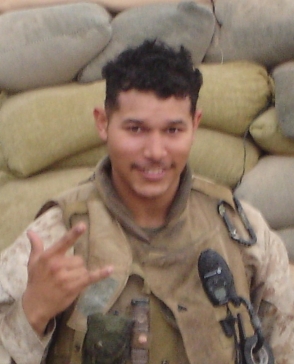



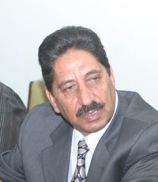

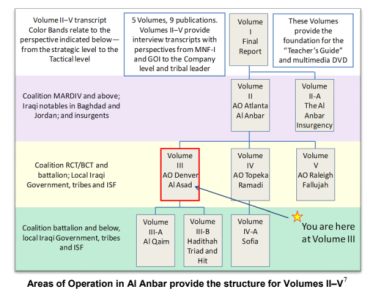 This is an outstanding reference, that is hard to find. I’ve told several people about it, and some have asked me to send it. Now I can just send a link and people can download for themselves.
This is an outstanding reference, that is hard to find. I’ve told several people about it, and some have asked me to send it. Now I can just send a link and people can download for themselves.

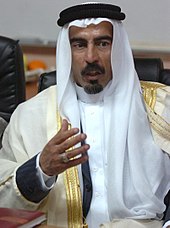
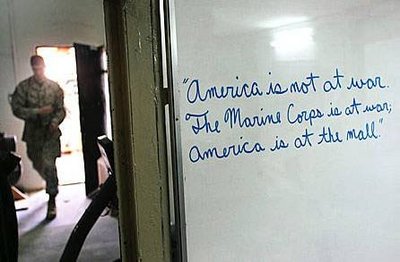
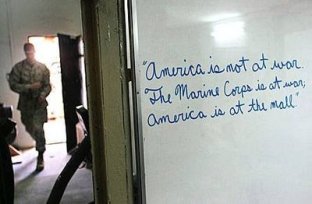
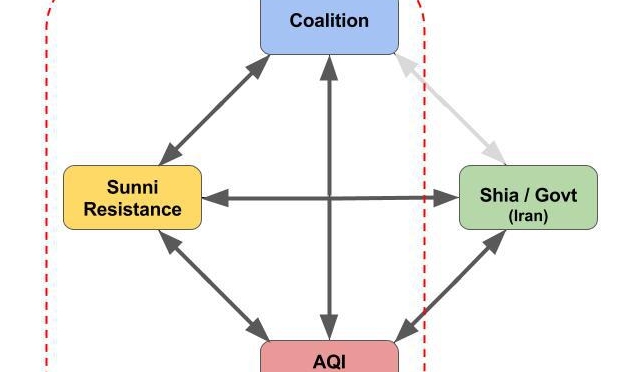

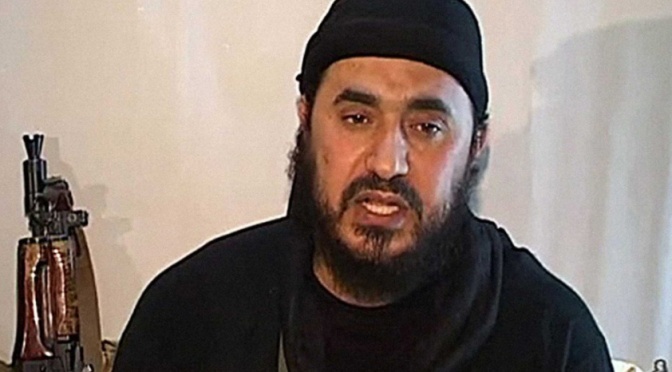
 In February 2004, the Coalition Provisional Authority (CPA) in Iraq translated and
In February 2004, the Coalition Provisional Authority (CPA) in Iraq translated and 
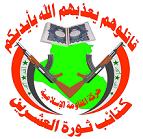 The ‘1920s Revolutionary Brigades’ most easily fit the characterization of an ‘Iraqi nationalist’ group, and many of its members were former military personnel. The name referred to the 1920 Iraqi uprising against the British colonial occupation, and the group formed soon after the US-led invasion in 2003. Their rhetoric was anti-colonial, anti-occupation, anti-coalition, their stated purpose to rid Iraq of all foreign troops (including Iranian-controlled militias), and revert to an Arab, Sunni-dominated country. The main distinction between the 1920s Brigades and most other groups in Anbar was the lack of emphasis on jihad and establishing an Islamic ‘caliphate’. This translated into their tactics and how they fought. Fighters in the 1920s Brigades were far more likely to take on US troops using direct fire and IEDs, and much less likely to use suicide bombings. In general, they avoided hurting Iraqi civilians and in some instances exhibited a rough-hewn ‘code of conduct’ on the battlefield, such as not beheading captives or defiling bodies. Their main operating areas in western Anbar, however, were mostly north of the Euphrates, between Rawah and Hit, which was further east and outside of 3/2’s battlespace in the Al-Qaim district.
The ‘1920s Revolutionary Brigades’ most easily fit the characterization of an ‘Iraqi nationalist’ group, and many of its members were former military personnel. The name referred to the 1920 Iraqi uprising against the British colonial occupation, and the group formed soon after the US-led invasion in 2003. Their rhetoric was anti-colonial, anti-occupation, anti-coalition, their stated purpose to rid Iraq of all foreign troops (including Iranian-controlled militias), and revert to an Arab, Sunni-dominated country. The main distinction between the 1920s Brigades and most other groups in Anbar was the lack of emphasis on jihad and establishing an Islamic ‘caliphate’. This translated into their tactics and how they fought. Fighters in the 1920s Brigades were far more likely to take on US troops using direct fire and IEDs, and much less likely to use suicide bombings. In general, they avoided hurting Iraqi civilians and in some instances exhibited a rough-hewn ‘code of conduct’ on the battlefield, such as not beheading captives or defiling bodies. Their main operating areas in western Anbar, however, were mostly north of the Euphrates, between Rawah and Hit, which was further east and outside of 3/2’s battlespace in the Al-Qaim district. The Islamic Army in Iraq (IAI), or Jaysh al-Islami (JAI) was another Iraqi nationalist-oriented group that sprang up soon after 2003. With some estimates crediting IAI with 10,000 members, it was probably the largest Sunni insurgent group in the early part of the war. Like the 1920s Brigades, IAI aimed at ejecting all foreign forces from Iraq and counted many former military in its ranks. But as its name implies, IAI’s agenda was more Islamist in nature and up through 2005 cooperated closely with Al-Qaida in Iraq (AQI) and its predecessor groups. Sheikh Ahmed al-Dabash, one of IAI’s founders, claimed to be “like a brother” to Zarqawi. By 2006, however, IAI was denouncing Zarqawi’s bloody attacks on fellow Iraqis and began openly fighting against AQI. In Anbar, IAI mainly operated in and around Fallujah and Ramadi, although some of the tribal fighters that 3/2 encountered further west may have been affiliated with IAI.
The Islamic Army in Iraq (IAI), or Jaysh al-Islami (JAI) was another Iraqi nationalist-oriented group that sprang up soon after 2003. With some estimates crediting IAI with 10,000 members, it was probably the largest Sunni insurgent group in the early part of the war. Like the 1920s Brigades, IAI aimed at ejecting all foreign forces from Iraq and counted many former military in its ranks. But as its name implies, IAI’s agenda was more Islamist in nature and up through 2005 cooperated closely with Al-Qaida in Iraq (AQI) and its predecessor groups. Sheikh Ahmed al-Dabash, one of IAI’s founders, claimed to be “like a brother” to Zarqawi. By 2006, however, IAI was denouncing Zarqawi’s bloody attacks on fellow Iraqis and began openly fighting against AQI. In Anbar, IAI mainly operated in and around Fallujah and Ramadi, although some of the tribal fighters that 3/2 encountered further west may have been affiliated with IAI. Various tribal groups (an admittedly imprecise term) also fought against 3/2 and other coalition forces in far western Anbar. These could be very localized, operating only in a particular village or district, under direction of a minor sheikh. In 2003 and 2004, most of these groups and cells were fighting against US troops, first against the Army’s 3rd Cav and then the Marines, and saw Zarqawi and his foreign fighters as allies against the occupiers. In fact, distinguishing between foreign fighters and local insurgents could be difficult. Clearly, 3/2 Marines were often fighting both foreign and local fighters in the same engagement. By 2005, however, some of these tribal forces were rebelling against AQI. The most notable of these groups was the “Hamza Brigade”, an armed militia formed by the Albu Mahal tribe in and around Husaybah.
Various tribal groups (an admittedly imprecise term) also fought against 3/2 and other coalition forces in far western Anbar. These could be very localized, operating only in a particular village or district, under direction of a minor sheikh. In 2003 and 2004, most of these groups and cells were fighting against US troops, first against the Army’s 3rd Cav and then the Marines, and saw Zarqawi and his foreign fighters as allies against the occupiers. In fact, distinguishing between foreign fighters and local insurgents could be difficult. Clearly, 3/2 Marines were often fighting both foreign and local fighters in the same engagement. By 2005, however, some of these tribal forces were rebelling against AQI. The most notable of these groups was the “Hamza Brigade”, an armed militia formed by the Albu Mahal tribe in and around Husaybah. 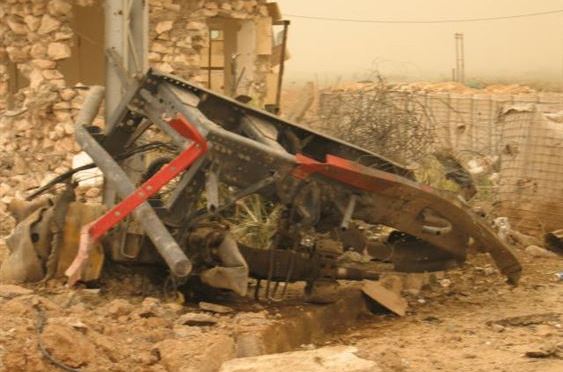
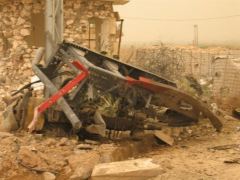
 One of the big critiques coming from the press and think-tank crowd (then and now), was that the Bush Administration, Rumsfeld’s Defense Department and the U.S. military writ large didn’t have enough subtlety to understand who we were fighting in Iraq. And that’s true in absolute terms. In 2003, American politicos, the generals, the combat troops and the intelligence agencies, didn’t understand the nature of the “enemy” in Iraq.
One of the big critiques coming from the press and think-tank crowd (then and now), was that the Bush Administration, Rumsfeld’s Defense Department and the U.S. military writ large didn’t have enough subtlety to understand who we were fighting in Iraq. And that’s true in absolute terms. In 2003, American politicos, the generals, the combat troops and the intelligence agencies, didn’t understand the nature of the “enemy” in Iraq.